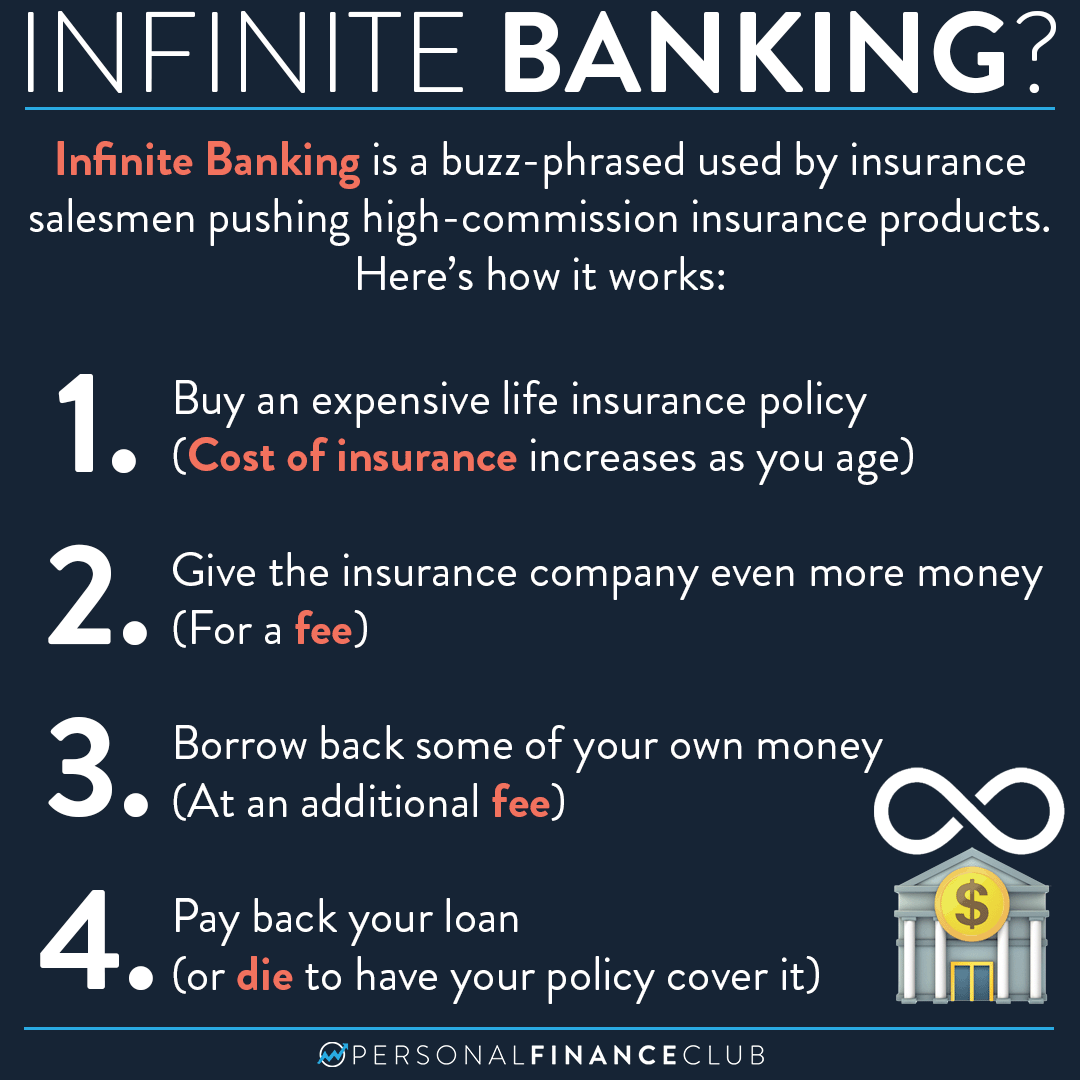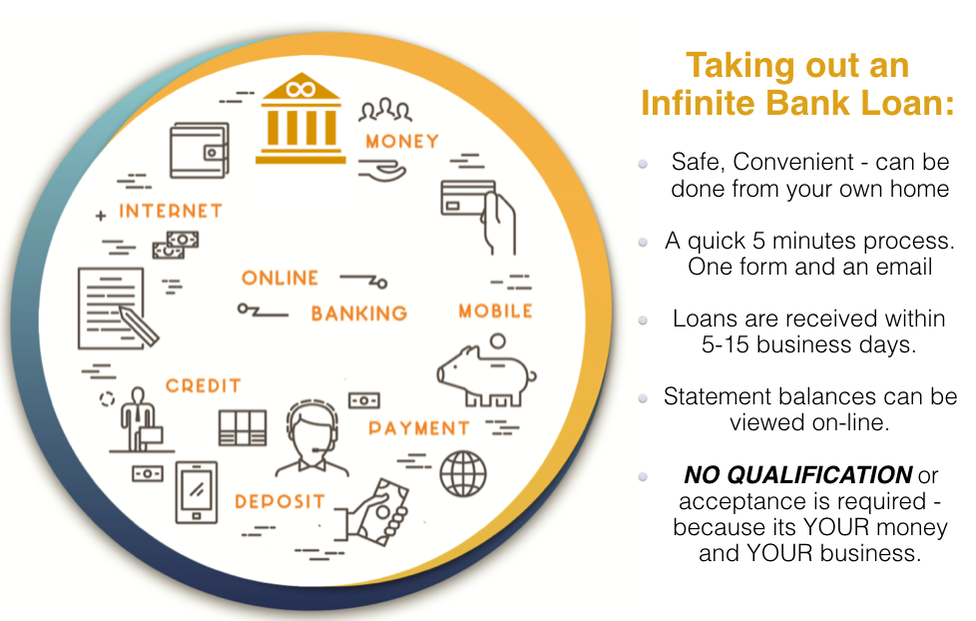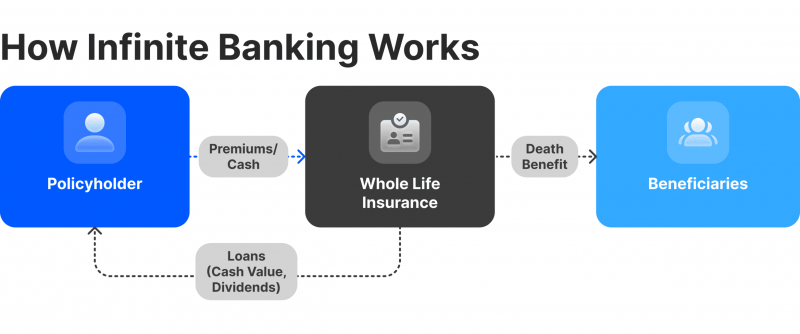All Categories
Featured
Table of Contents
The downsides of infinite financial are commonly forgotten or not stated in any way (much of the information readily available concerning this concept is from insurance coverage agents, which may be a little prejudiced). Just the money worth is expanding at the reward rate. You also need to pay for the expense of insurance, fees, and expenses.

Every permanent life insurance plan is different, but it's clear a person's total return on every buck invested on an insurance coverage product can not be anywhere close to the reward price for the plan.
Nelson Nash Infinite Banking
To provide a very standard and theoretical example, let's assume somebody is able to make 3%, on standard, for every dollar they invest on an "limitless banking" insurance coverage product (after all expenses and costs). If we presume those dollars would be subject to 50% in tax obligations complete if not in the insurance product, the tax-adjusted rate of return might be 4.5%.

We presume more than ordinary returns on the entire life product and a really high tax rate on bucks not place into the plan (that makes the insurance coverage item look better). The reality for several people might be worse. This pales in comparison to the long-term return of the S&P 500 of over 10%.
Infinite financial is an excellent product for representatives that offer insurance policy, however might not be optimal when compared to the more affordable alternatives (with no sales individuals earning fat payments). Below's a breakdown of a few of the various other supposed advantages of unlimited banking and why they may not be all they're fractured up to be.
Privatized Banking Policy
At the end of the day you are purchasing an insurance coverage item. We enjoy the protection that insurance coverage offers, which can be gotten much less expensively from a low-priced term life insurance coverage policy. Overdue finances from the policy may additionally minimize your survivor benefit, diminishing another level of defense in the plan.
The idea just works when you not just pay the substantial costs, yet utilize added money to purchase paid-up enhancements. The opportunity price of every one of those bucks is remarkable very so when you might instead be spending in a Roth Individual Retirement Account, HSA, or 401(k). Even when compared to a taxed investment account and even an interest-bearing account, boundless financial may not offer similar returns (contrasted to spending) and similar liquidity, access, and low/no cost framework (contrasted to a high-yield interest-bearing accounts).
With the rise of TikTok as an information-sharing platform, economic recommendations and techniques have actually located an unique means of spreading. One such technique that has actually been making the rounds is the limitless banking idea, or IBC for short, gathering recommendations from celebrities like rap artist Waka Flocka Fire. Nevertheless, while the approach is currently popular, its roots map back to the 1980s when economist Nelson Nash presented it to the globe.

Within these policies, the cash money value grows based upon a price set by the insurance firm. When a considerable cash value gathers, insurance policy holders can get a cash money worth car loan. These fundings differ from traditional ones, with life insurance policy functioning as collateral, meaning one could shed their coverage if borrowing exceedingly without sufficient cash worth to sustain the insurance coverage prices.
Personal Banking Concept
And while the attraction of these plans appears, there are inherent constraints and risks, requiring thorough cash worth tracking. The technique's authenticity isn't black and white. For high-net-worth people or entrepreneur, specifically those making use of techniques like company-owned life insurance policy (COLI), the advantages of tax breaks and substance development could be appealing.
The attraction of limitless banking does not negate its challenges: Price: The foundational demand, a permanent life insurance policy policy, is pricier than its term equivalents. Eligibility: Not everyone gets whole life insurance policy because of strenuous underwriting procedures that can exclude those with details wellness or lifestyle conditions. Complexity and danger: The complex nature of IBC, coupled with its risks, might discourage many, especially when simpler and less risky choices are available.

Assigning around 10% of your month-to-month income to the plan is simply not practical for most individuals. Using life insurance policy as a financial investment and liquidity source requires self-control and tracking of policy money value. Speak with an economic advisor to determine if infinite banking aligns with your concerns. Component of what you review below is merely a reiteration of what has currently been claimed over.
So before you obtain right into a scenario you're not prepared for, know the adhering to first: Although the concept is frequently sold therefore, you're not actually taking a loan from on your own - nash infinite banking. If that held true, you would not have to settle it. Rather, you're borrowing from the insurance company and need to settle it with interest
Ibc Full Form In Banking
Some social media posts suggest using cash value from whole life insurance policy to pay for credit score card debt. The idea is that when you repay the finance with interest, the quantity will certainly be sent out back to your financial investments. However, that's not how it functions. When you repay the financing, a section of that interest mosts likely to the insurer.
For the initial several years, you'll be paying off the payment. This makes it very tough for your policy to gather worth during this time. Unless you can afford to pay a couple of to a number of hundred dollars for the next decade or even more, IBC won't work for you.
If you call for life insurance coverage, right here are some valuable tips to take into consideration: Think about term life insurance. Make sure to shop around for the best rate.

Infinite financial is not a product and services provided by a certain establishment. Boundless financial is a method in which you purchase a life insurance coverage plan that accumulates interest-earning cash worth and secure fundings against it, "borrowing from on your own" as a resource of capital. At some point pay back the financing and start the cycle all over again.
Pay policy costs, a part of which constructs money value. Take a lending out versus the policy's cash money worth, tax-free. If you use this idea as meant, you're taking cash out of your life insurance coverage plan to buy everything you would certainly require for the remainder of your life.
Latest Posts
Bank On Yourself Review Feedback
Whole Life Insurance For Infinite Banking
Be Your Own Bank: 3 Secrets Every Saver Needs